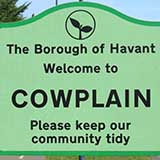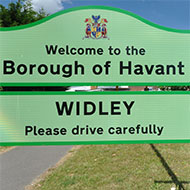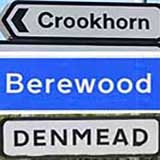Mobility Scooters
RULES ON THE USE OF MOBILITY SCOOTERS & POWERED WHEELCHAIRS.
I must say at the outset that the regulations on mobility scooters are need of updating as they are currently classed as invalid carriages so for now will consider the current laws and regulations. I shall return to this aspect later.
The first thing to note is that EVERYONE using roads or pavements is subject to The Highway Code and should be familiar with it. It is not an excuse to say one is not aware of this. The Code uses different terms in the rules, MUST/MUST NOT which are backed up by legislation or should/not and do/not which are advisory. However, in the event of an accident or injury to others not following these rules may be taken into account by the courts. There is a specific section on scooters.
The law and other rules pertaining to Class 3 mobility scooters and powered wheelchairs.
• Class 1 - manual wheelchairs, ie self-propelled or attendant-propelled, not electrically powered;
• Class 2 - powered wheelchairs and mobility scooters, intended for footpath or pavement use only with a maximum speed limit of 4 mph;
• Class 3 - powered wheelchairs and mobility scooters, for use on the road, with a maximum speed limit of 8 mph but with the facility to travel at 4 mph on a footpath or pavement.
Not everyone can use a mobility vehicle. The current rules state that a Class 2 and Class 3 vehicle may only be used by a disabled person, or by a non-disabled person who is demonstrating a vehicle before sale, training a disabled user or taking the vehicle to or from a place for maintenance or repair. In addition, a Class 3 vehicle can only be used by a disabled person aged 14 or over. A disabled person in this context is someone with an injury, physical disability or medical condition which means that they are unable to walk or have difficulty in walking.
Eyesight requirements. There is no legal eyesight requirement to drive mobility scooters or powered wheelchairs, but you should be able to read a car’s registration number from a distance of 12.3 metres (40 feet). You must check that you can still do this regularly.
While on the road you must obey all the rules for cars. All normal parking restrictions should be observed. Your vehicle should not be left unattended if it causes an obstruction to other pedestrians - especially those in wheelchairs. Parking concessions provided under the Blue Badge scheme may apply.
While on the pavement you MUST NOT travel faster than 4 mph (6 km/h) on pavements or in other pedestrian areas. You may need to reduce your speed to adjust to other pavement users who may not be able to move out of your way quickly enough or where the pavement is too narrow. Pedestrians have right of way.
You don’t have to pay vehicle tax for any mobility scooter or powered wheelchair, but you do still need to register class 3 models with the DVLA and renew it every year. To the current regulations you may be asked for proof of a disability. The form is quite complex and not all local offices seem to know about it. You don’t need insurance for a mobility scooter or powered wheelchair, although it’s highly advisable as you can be sued for damages if you cause injury. When purchasing a Class 3 vehicle the dealer should be able to handle this for you as well as giving you training and making you aware of your obligations although many on-line dealers do not do so.
With regard to cycles.
You MUST NOT cycle on a pavement, you MUST obey all traffic signs and traffic light signals and you MUST NOT cross the stop line when the traffic lights are red. Strictly speaking it is not illegal to ride across a pedestrian crossing, however the Highway Code says "Do not ride across a pelican, puffin or zebra crossing. Dismount and wheel your cycle across." If you cause an injury to another person while doing so the court will take into account that you did not observe this rule.
To return to the need for changes to law on these vehicles, there was a consultation in 2010 under the Labour government. The major problem in my opinion is that only those with a disability can use them and old age itself is not a disability. In November 2011 under the coalition government the Parliamentary Under Secretary of State, in answer to Parliamentary Questions listed those issues that were to be taken forward from the consultation. Mobility scooters and powered wheelchairs are referred to as “invalid carriages” in legislation. In this document we refer to them as mobility scooters and powered wheelchairs unless a specific reference to “invalid carriages” has to be made. The term “invalid carriage” is the legal term for mobility scooters and powered wheelchairs but is now considered both outdated and offensive. In addition, technological advances in scooter and wheelchair design mean that a more descriptive term is now appropriate. The majority of respondents to the consultation favoured an alternative term and made a variety of suggestions as to what should replace “invalid carriage”. Replacing this term would require an amendment to the Chronically Sick and Disabled Persons Act 1970 (paragraph 20 (2))." It was further stated that changes to law would be brought forward
When Parliamentary time is available".The government website does not show any changes as of April this year. Please feel free to ask me any questions.
Fred Dunford – May 2016





